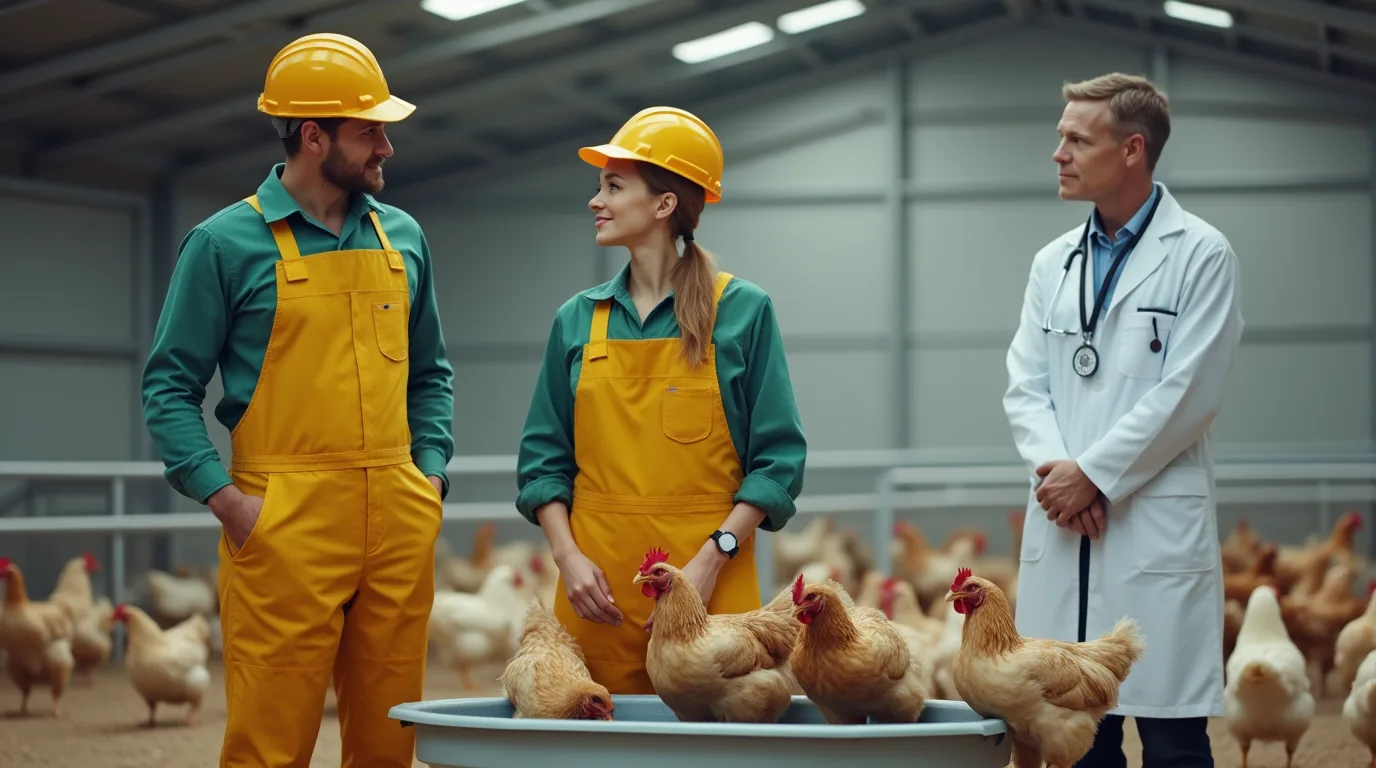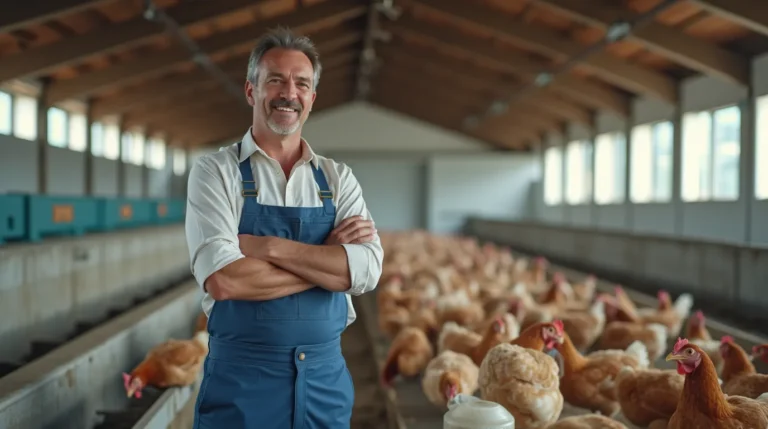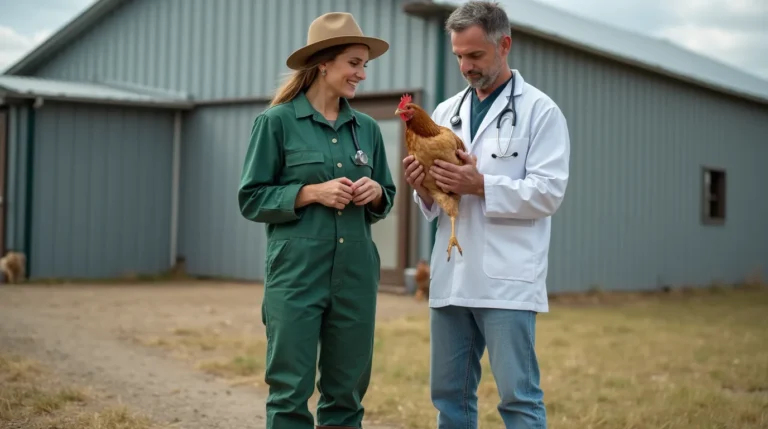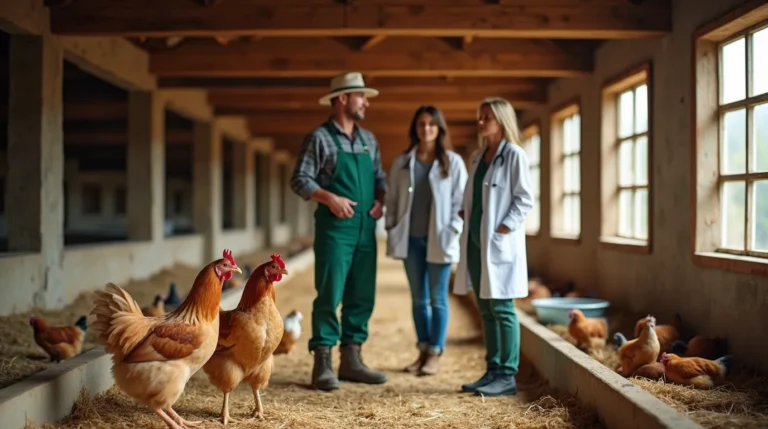Protect your poultry from Salmonella in Poultry : Discover critical risk factors, symptoms, and proven prevention strategies to safeguard your flock’s health and food safety.
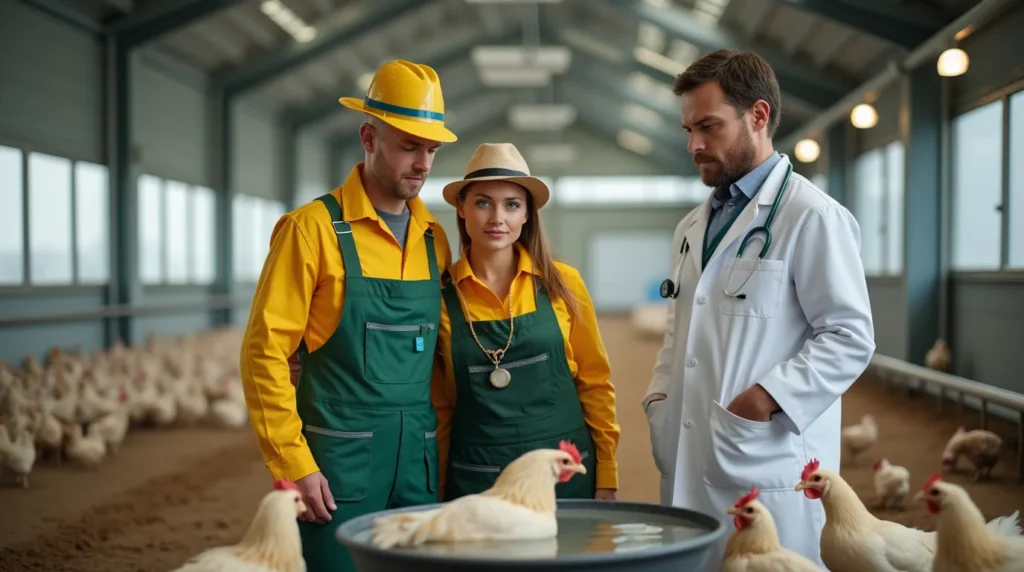
Table of Contents
Salmonella remains one of the most significant health challenges in poultry production, posing serious risks to bird health, farm productivity, and human food safety. This comprehensive guide will dive deep into the complex world of Salmonella in poultry, exploring seven critical risk factors, identifying key symptoms, and providing actionable prevention strategies that every poultry farmer and backyard chicken keeper needs to know.
Understanding Salmonella in Poultry
What is Salmonella?
Salmonella is a group of bacteria that can cause severe intestinal infections in birds and humans. In poultry, these bacteria can spread rapidly, compromising entire flocks and potentially contaminating food products.
7 Critical Risk Factors for Salmonella in Poultry
1. Housing and Environmental Conditions
Key Risk Elements:
- Overcrowded living spaces
- Poor ventilation
- High humidity levels
- Inadequate cleaning protocols
Impact: Cramped, unsanitary conditions create ideal breeding grounds for Salmonella, increasing transmission risks exponentially.
2. Feed and Water Quality
Contamination Sources:
- Unprocessed or improperly stored feed
- Stagnant water sources
- Rodent and pest infiltration
- Irregular feed rotation
Prevention Strategies:
- Use sealed, rodent-proof storage containers
- Implement regular water sanitation protocols
- Source feed from reputable suppliers
- Maintain strict feed inventory management
3. Biosecurity Breaches
High-Risk Scenarios:
- Visitors entering poultry areas
- Introduction of new birds without quarantine
- Cross-contamination from equipment
- Inadequate protective gear protocols
Comprehensive Biosecurity Checklist:
| Area | Recommended Protocol |
| Visitor Access | Mandatory disinfection stations |
| Equipment | Regular sanitization |
| New Birds | Mandatory 2-week quarantine |
| Staff Training | Quarterly biosecurity workshops |
4. Bird Age and Immune Status
Vulnerability Factors:
- Young chicks with underdeveloped immune systems
- Stressed or immunocompromised birds
- Genetic predispositions
- Nutritional deficiencies
5. Geographic and Climate Considerations
Regional Risk Factors:
- Tropical and humid environments
- Areas with high bird population density
- Regions with limited veterinary infrastructure
- Seasonal temperature fluctuations
6. Transportation and Movement Stress
Stress-Induced Salmonella Risks:
- Long-distance transportation
- Improper handling during movement
- Mixing birds from different sources
- Inadequate rest and recovery periods
7. Inadequate Vaccination and Health Monitoring
Critical Monitoring Components:
- Regular bacterial screening
- Comprehensive vaccination programs
- Rapid response protocols
- Detailed health record maintenance
Symptoms of Salmonella in Poultry
Physical Indicators
- Reduced egg production
- Lethargy and decreased activity
- Ruffled feathers
- Diarrhea
- Sudden weight loss
- Increased mortality rates
Behavioral Changes
- Isolation from flock
- Reduced feed intake
- Unusual vocalization
- Decreased social interaction
Prevention Strategies
Proactive Management Techniques
- Implement rigorous biosecurity protocols
- Maintain impeccable hygiene standards
- Develop comprehensive vaccination programs
- Conduct regular health screenings
- Optimize nutrition and environmental conditions
Recommended Pet Products on Amazon
- Poultry Disinfectant Spray
- Veterinary-Grade Biosecurity Footwear
- Portable Chicken Coop Sanitizer
- Professional Poultry Health Monitoring Kit
Frequently Asked Questions (FAQ)
Q1: How quickly can Salmonella spread in a poultry flock? Salmonella can spread within hours, potentially contaminating an entire flock within days if left unchecked.
Q2: Can humans contract Salmonella from infected poultry? Yes, improper handling of infected birds or consuming contaminated eggs/meat can lead to human Salmonella infections.
Q3: How often should poultry be tested for Salmonella? Recommended frequency is quarterly, with additional testing after any detected health anomalies.
Conclusion
Protecting your poultry from Salmonella requires a multi-faceted, proactive approach. By understanding risk factors, implementing robust prevention strategies, and maintaining vigilant health monitoring, farmers can significantly reduce Salmonella risks.
Call to Action: Share your experiences and Salmonella prevention strategies in the comments below! Have you successfully managed Salmonella risks in your flock?
Additional Resources
For more expert pet care guidelines, visit BlithePet Your trusted source for comprehensive animal health information.

